This dairy free ricotta cheese made with almonds is mild flavored and creamy with a slightly grainy consistency, just like the real thing! Enjoy all your favorite recipes made with ricotta such as cannoli; stuffed pasta; cookies and more. I guarantee no one will be able to tell the difference!
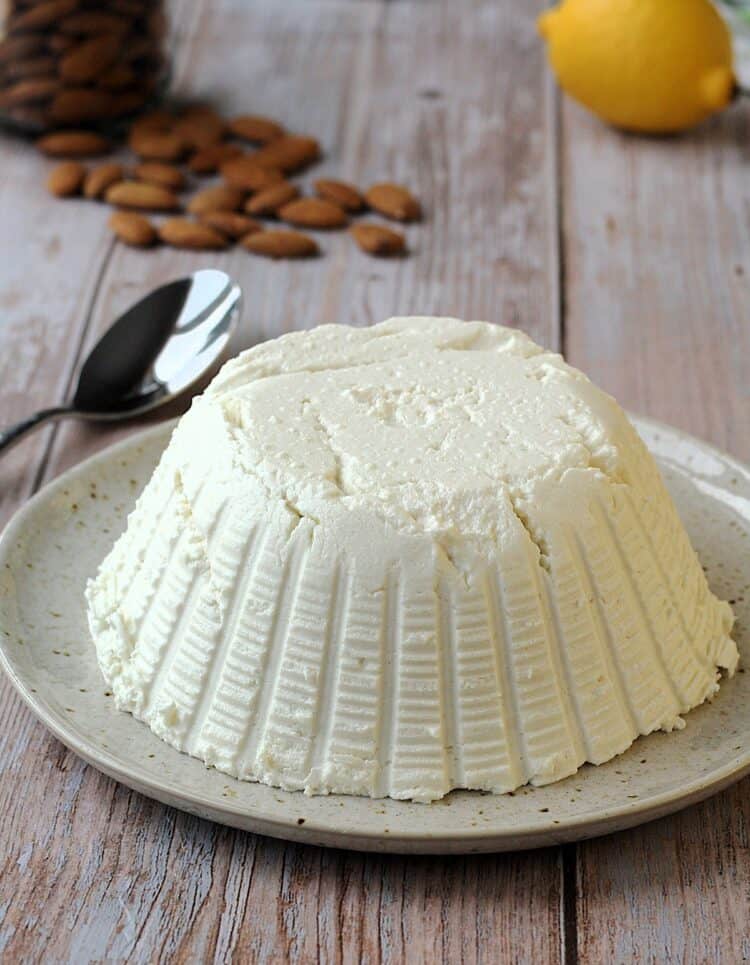
We are a participant in the Amazon Services LLC Associates Program, an affiliate advertising program designed to provide a means for us to earn fees by linking to Amazon.com and affiliated sites.
Are you missing some of your favorite foods made with ricotta due to a lactose intolerance or have chosen a plant based diet? This dairy free ricotta cheese made with almonds will allow you to enjoy all the classic ricotta recipes you love such as cannoli; ricotta gnocchi; stuffed pasta and more!
Unfortunately, I have developed an intolerance to dairy products and have decided that the undesirable consequences on my stomach are simply not worth the immediate gratification I get when I eat cannoli. That is until now!
I recently stumbled upon vegan ricotta recipes made with almonds on several Italian websites and I knew I had to try this out! And so I have spent the last few weeks testing, tasting, and tweaking this almond ricotta so that I can confidently share this no fail recipe with you.
The process of making this recipe is just like making dairy ricotta. And I guarantee you it really works. I was amazed to see that almond milk curdles just like dairy milk and produces ricotta with the same creamy consistency it's almost impossible to see the difference!
This recipe is a game changer for me and I hope it will be the same for my fellow lactose intolerant readers.
Before I get to the detailed recipe, I will begin by answering a few questions which I have anticipated.
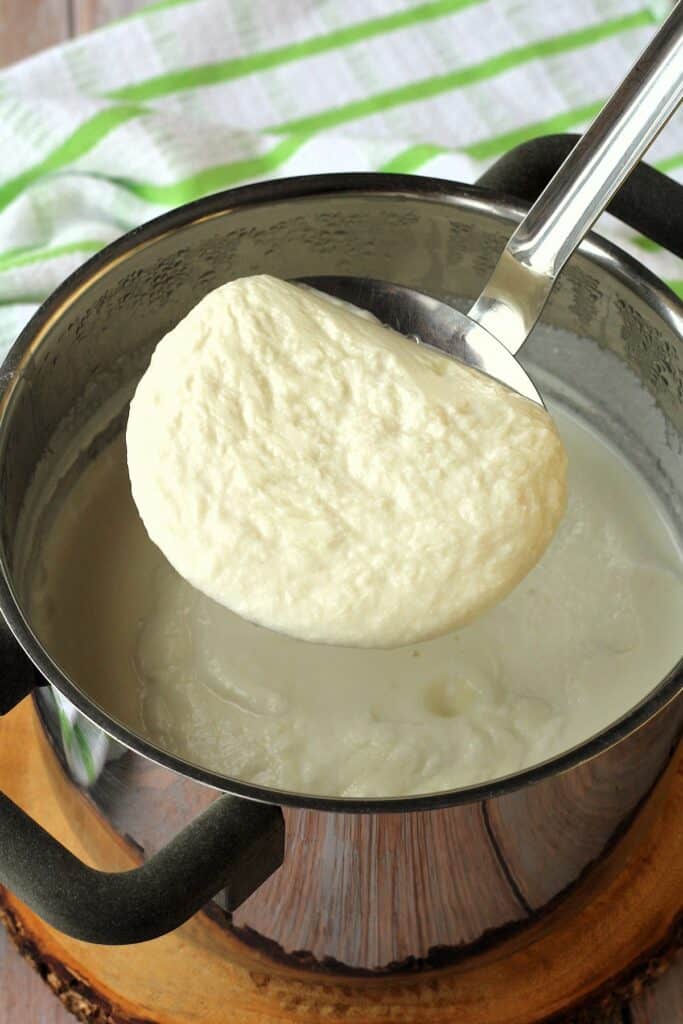
- Does almond ricotta taste like dairy ricotta?
- What can you make with dairy free ricotta?
- Can I use purchased almond milk to make almond ricotta?
- Does the almond pulp need to be separated from the almond milk?
- Equipment needed for making dairy free ricotta cheese
- Can a conventional food processor be used instead?
- Ingredient List
- Step by Step Instructions
- Recipe Notes
- A list of some of my favorite recipes made with ricotta!
- Dairy Free Ricotta Cheese Recipe
Does almond ricotta taste like dairy ricotta?
I have no doubt this is the first thing most of you are wondering. I will not lie to you, no it does not! How can ricotta made with almonds possibly taste like ricotta made with milk?
But here's the good news about this recipe: ricotta made with almond milk actually curdles and has the same creamy, slightly grainy consistency as the real thing.
It is mild flavored and this means you can use it in your favorite recipes with ricotta.
What can you make with dairy free ricotta?
You can substitute almond milk ricotta for just about any recipe that calls for dairy ricotta.
So far I have used this non-dairy ricotta cheese to make pizzelle cannoli; stuffed pasta such as crepe cannelloni (or manicotti); ricotta gnocchi; zucchini and ricotta meatballs and ciambelline with ricotta cookies.
I also made a tasty dip or spread for crostini consisting of puréed roasted red peppers; garlic; olive oil and this almond ricotta.
Check back with me on a regular basis here as I will update the list of recipes that I test with almond milk ricotta.
In each of these recipes I can sincerely say that if I had not informed my family beforehand they would not have been able to tell that they were not eating traditional ricotta.
Can I use purchased almond milk to make almond ricotta?
The almond milk in local grocery stores does not consist of pure almond milk. There are added ingredients such as vegetable oil, phosphate, natural flavor and gellan gum (whatever that is?) and this will not work to make this vegetarian ricotta.
In order for this ricotta recipe to work well you need pure almond milk without any additives. This is why I use whole almonds soaked in water to make almond milk before turning it into ricotta.
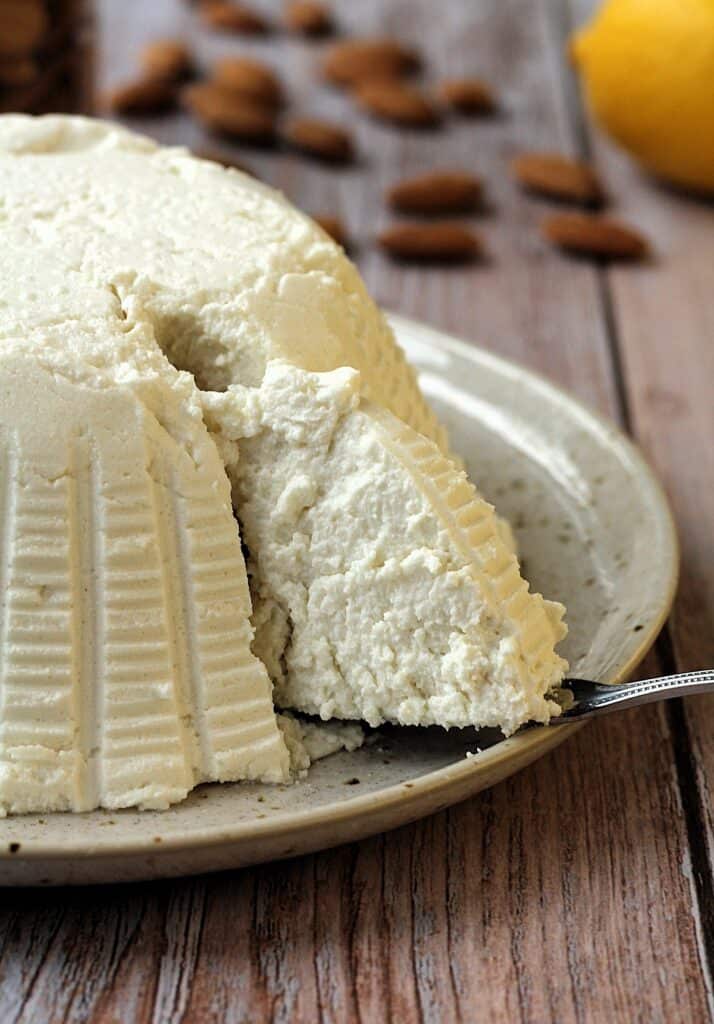
Does the almond pulp need to be separated from the almond milk?
If you are using a high speed blender, the almonds are very finely ground and therefore the milk making process produces very little pulp.
I did try a version of this recipe in which I strained the almond milk in a nut milk bag before adding it to my sauce pan to make the ricotta.
The result was a very smooth and creamy product that resembled cream cheese more than ricotta.
Therefore I prefer leaving the almond pulp in the milk which gives the ricotta that perfect, slightly grainy consistency just like ricotta made with dairy milk.
Equipment needed for making dairy free ricotta cheese
- High powered blender: for finely grinding the almonds. I used a Thermomix (Bimby), but any high powered blender such as a Vitamix will work well.
- Medium sized sauce pan: to heat the almond milk.
- Food thermometer: to heat the almond milk to 85 degrees C. If you don't own one you may eyeball it and heat the milk until just before it comes to a boil.
- Fine meshed sieve
- Bowl
- Cheese cloth or nut milk bag: to drain the ricotta.
- Ricotta mold: (optional) to get that lovely shape as photographed.
Can a conventional food processor be used instead?
I did try making my first batch of this ricotta with a 10 cup capacity food processor. Although it did work, my ricotta had a much grainier consistency than the one made with my Thermomix. That said, the grainy consistency was not apparent when I used it in a recipe.
If you choose to use your food processor to make almond ricotta here are a few tips:
- Process your almonds first on their own and grind as finely as possible.
- The food processor lid is not hermetically sealed therefore when I added water to the almonds and turned it on at high speed the water leaked out of every crevice! Therefore I would recommend that you process your almonds with only half the water (500 ml), transfer the mixture to your sauce pan and whisk in the remaining 500 ml. water by hand.
Ingredient List
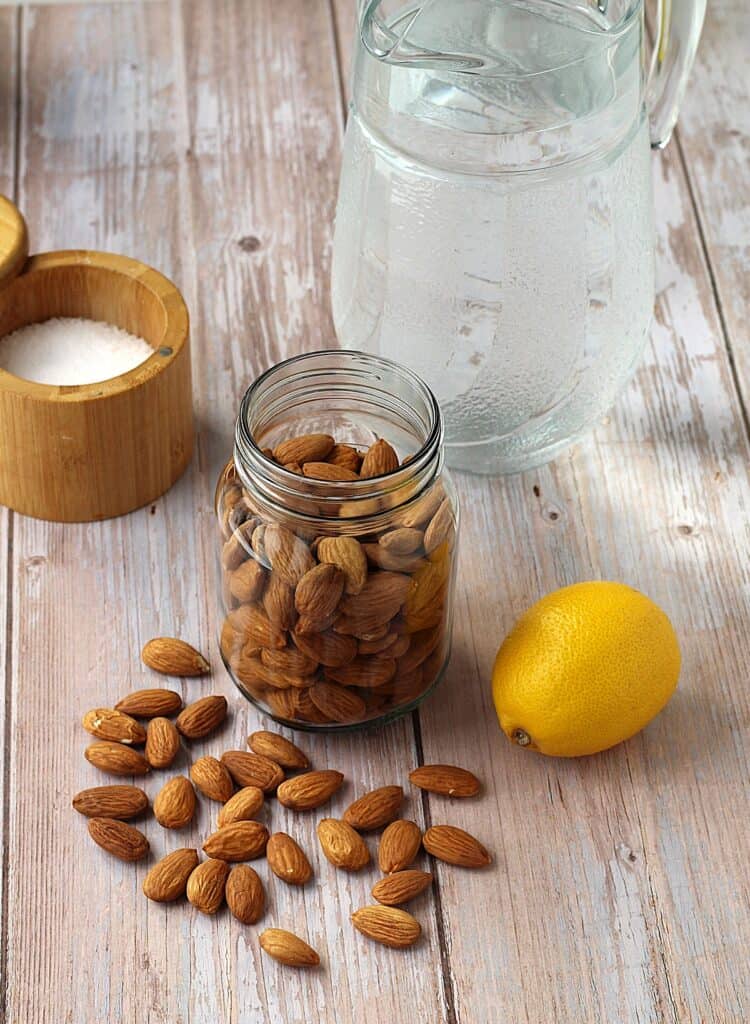
- Whole almonds: either blanched in boiling water and skins removed previous to soaking or soaked with the skins on and peeled afterwards. Both methods work well.
- Freshly squeezed lemon juice
- Salt: may be omitted if using ricotta for dessert recipes
- Water
The following are step by step instructions with images to guide you through this recipe. Please scroll to the end of this post for the detailed printable recipe card.
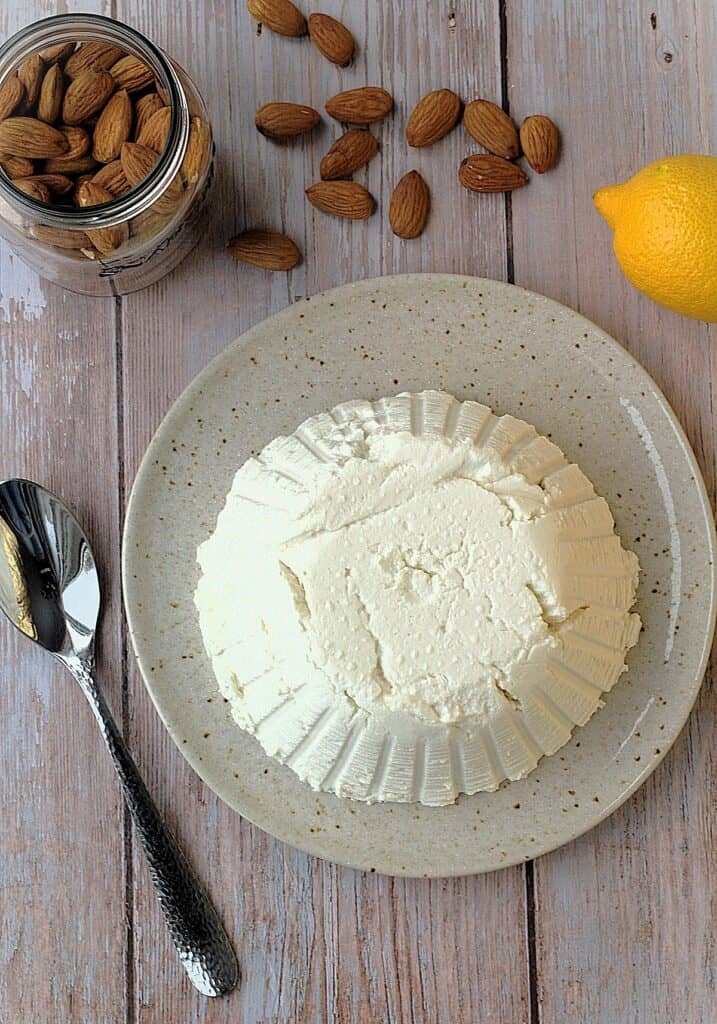
Step by Step Instructions
1. Soak the almonds
-The almonds may be blanched in boiling water for 1 minute, then cooled and skins removed by slipping them between your thumb and index finger. Cover with water and soak for 6 hours or overnight. Drain and continue with the next step.
-Alternately (and easier in my opinion), cover the almonds with water and soak for a minimum of 6 hours or overnight. Then drain and remove the skin as described above.
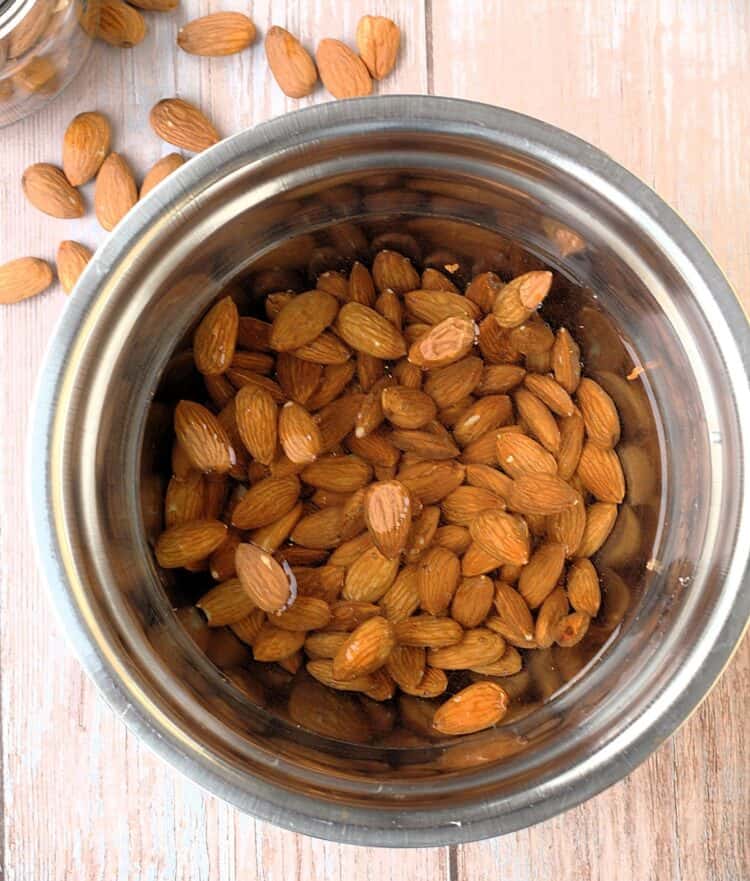
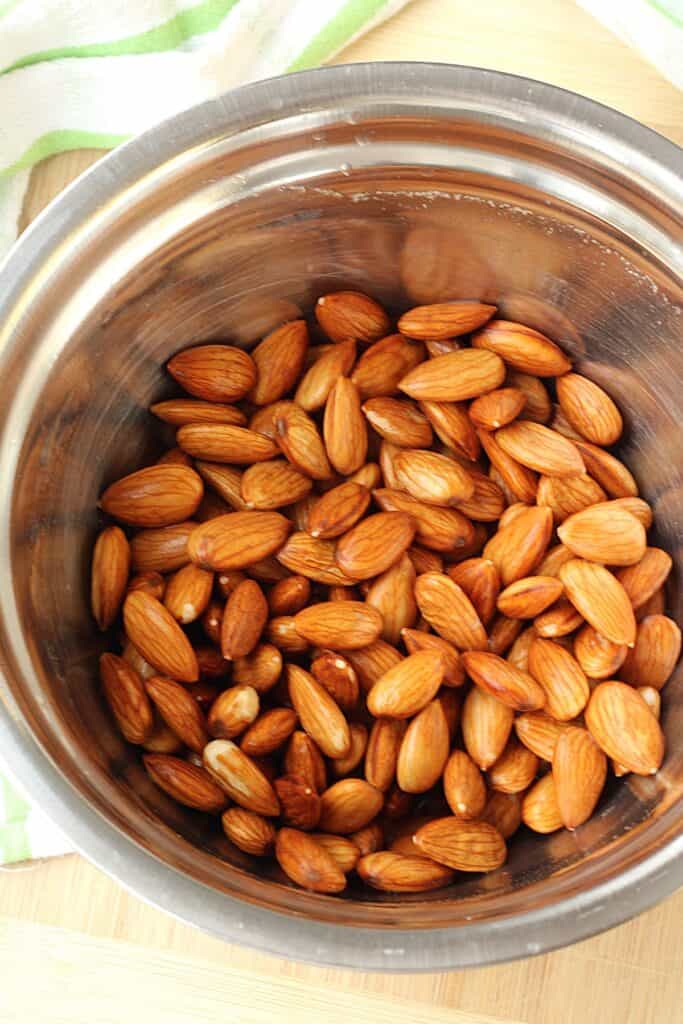
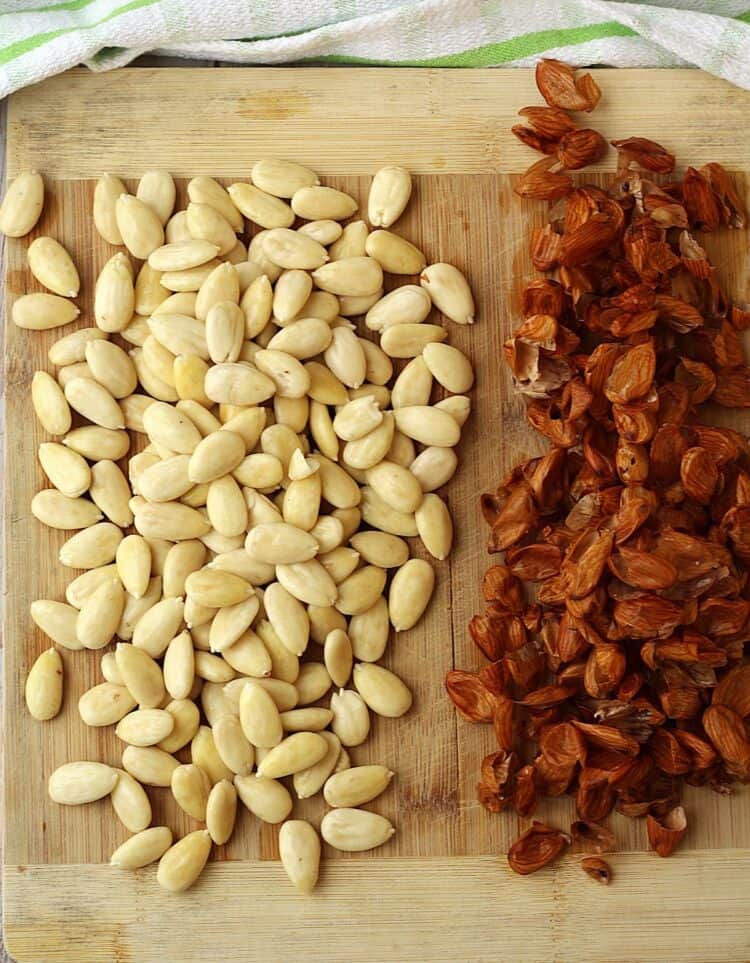
2. Finely grind the almonds
-Process the almonds until finely ground in your blender for 1 minute.
-Pour in 500 ml of water and process for 1 minute.
-Add the remaining 500 ml of water and process one more minute. The result will be a thick, creamy almond milk.
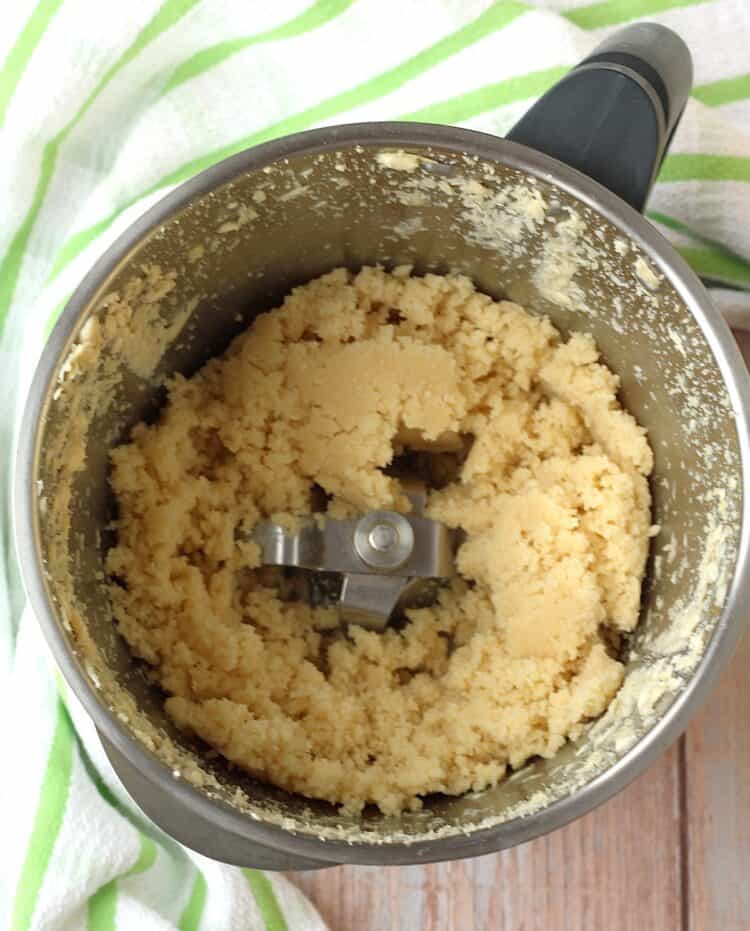
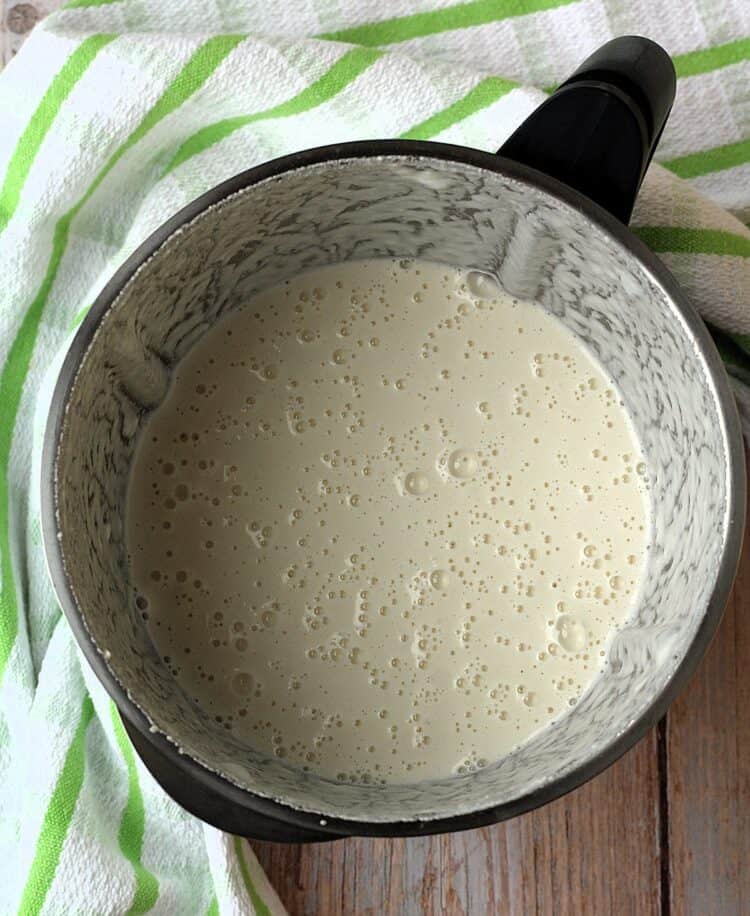
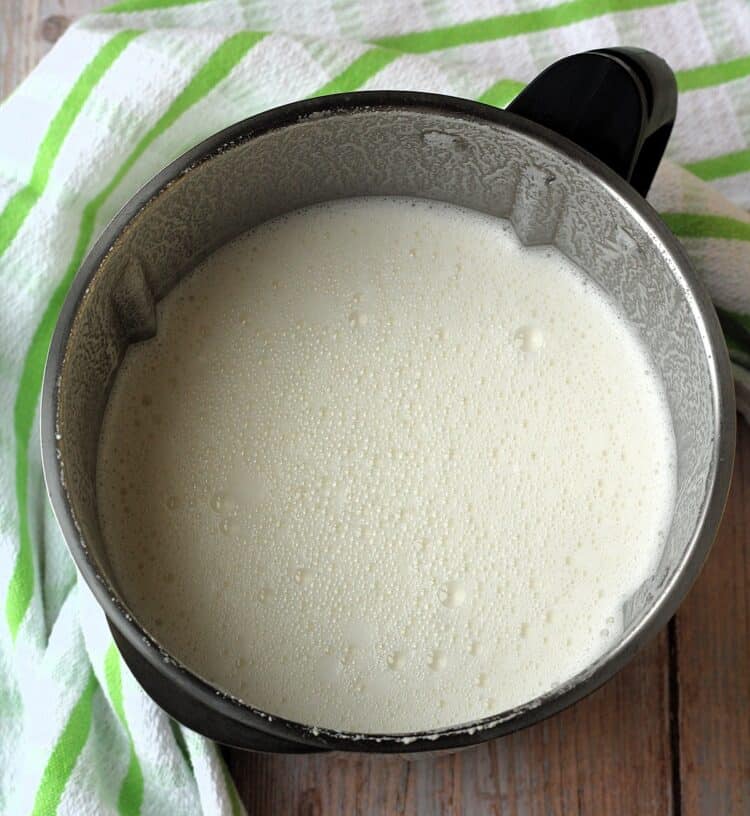
3. Curdle the almond milk
-Pour the almond milk in a medium sized sauce pan and heat over medium high heat, stirring frequently, until it reaches 85 degrees C or until it is just about to come to a boil.
-Turn off heat and stir in salt (if using) and lemon juice. Be sure to stir in the lemon juice thoroughly.
-Cover and let sit for 45 minutes.
-Meanwhile, line a fine meshed sieve with cheese cloth or a milk nut bag and place over a bowl.
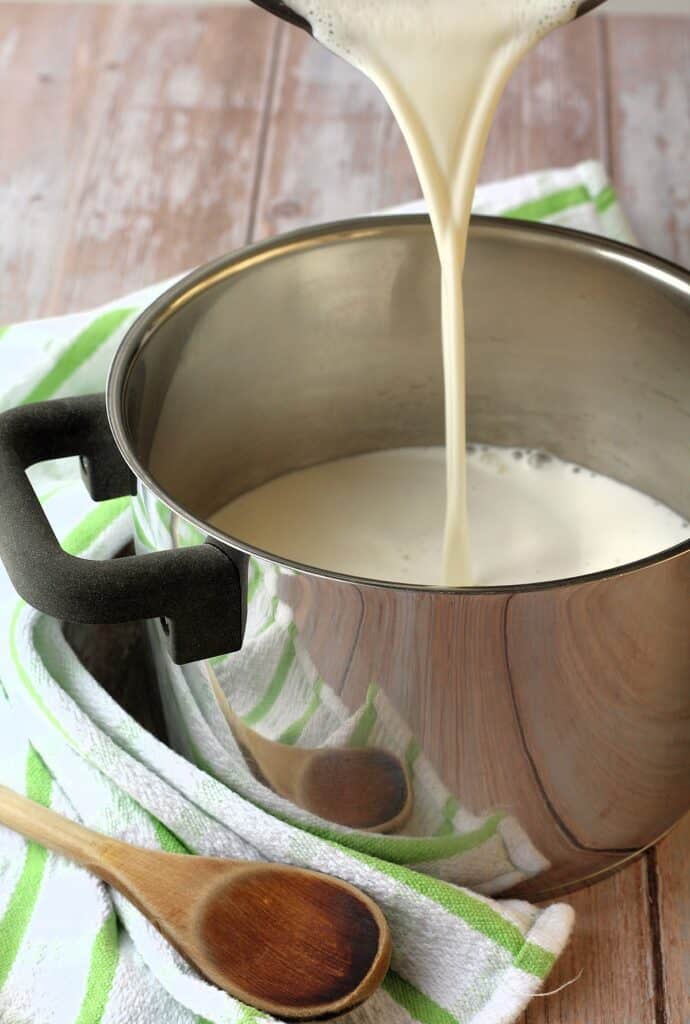
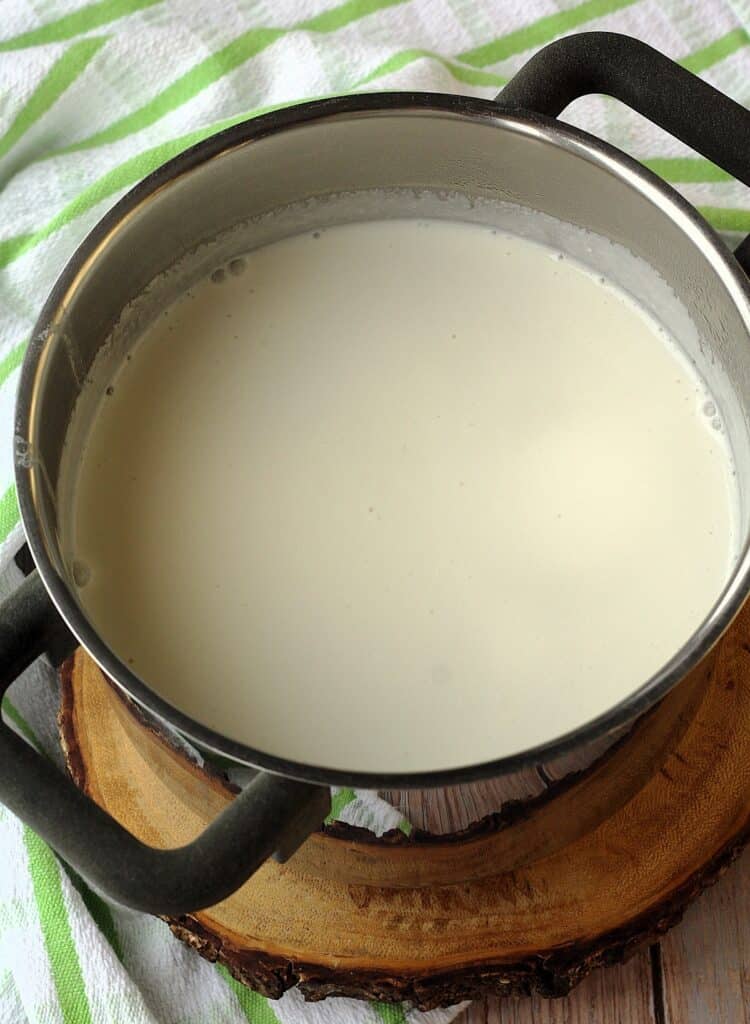
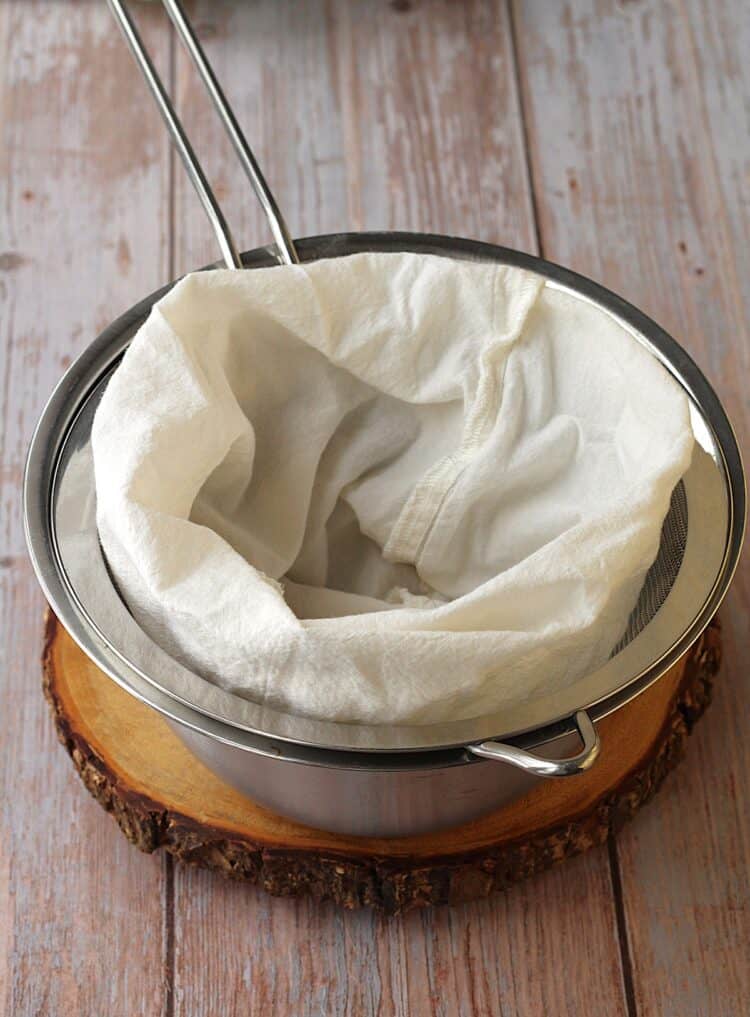
4. Drain and refrigerate
-After 45 minutes, gently pour the curdled almond milk into the lined sieve and let drain at room temperature for about an hour.
-Remove the whey as it fills the bowl. Discard it or reserve it to replace water when making bread or pizza. If may also be frozen for future use.
-Place the almond ricotta in the refrigerator, cover it, and let drain for another hour or so or overnight depending on how dry you want your ricotta.
-Transfer the drained almond ricotta to a sealed container or ricotta mold (if you have one) and keep refrigerated until you are ready to use it or for up to 3-4 days.
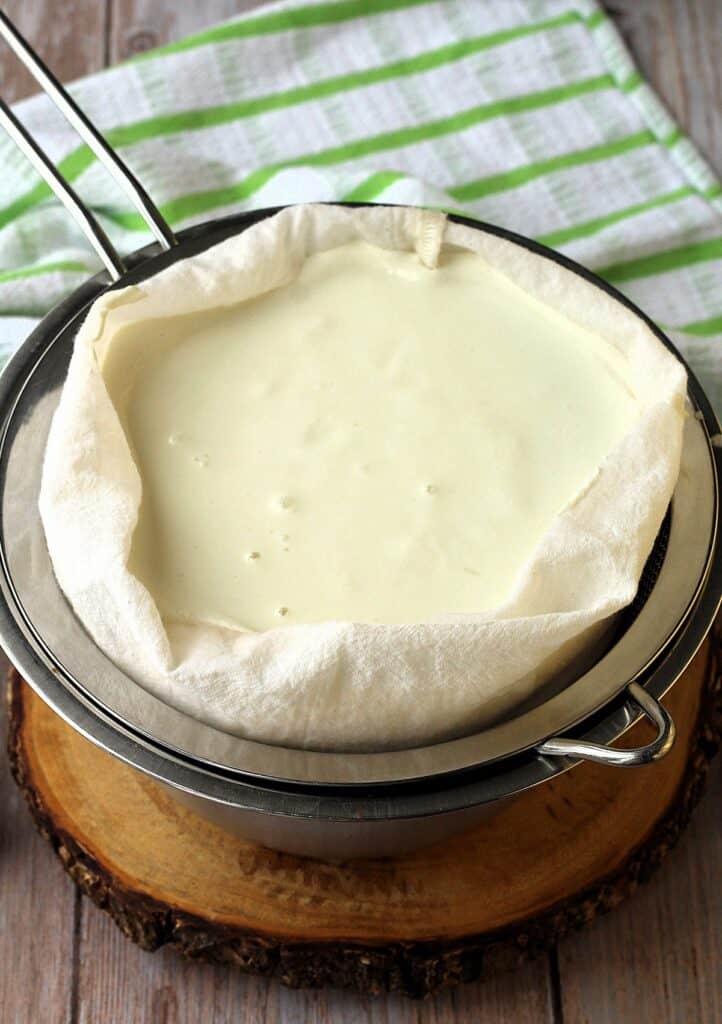
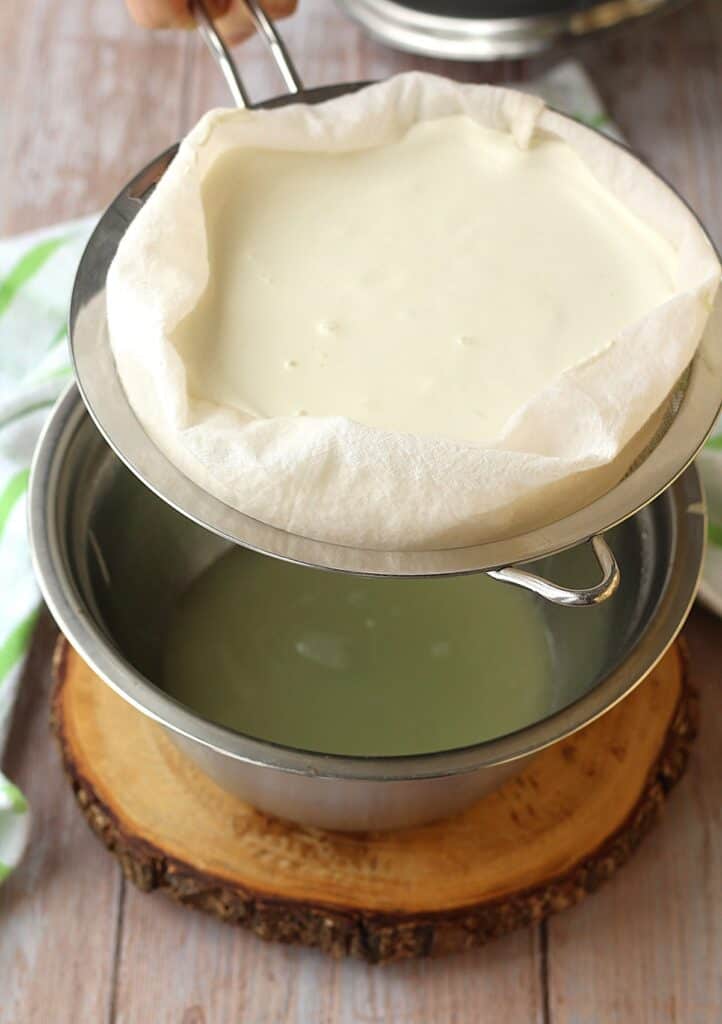
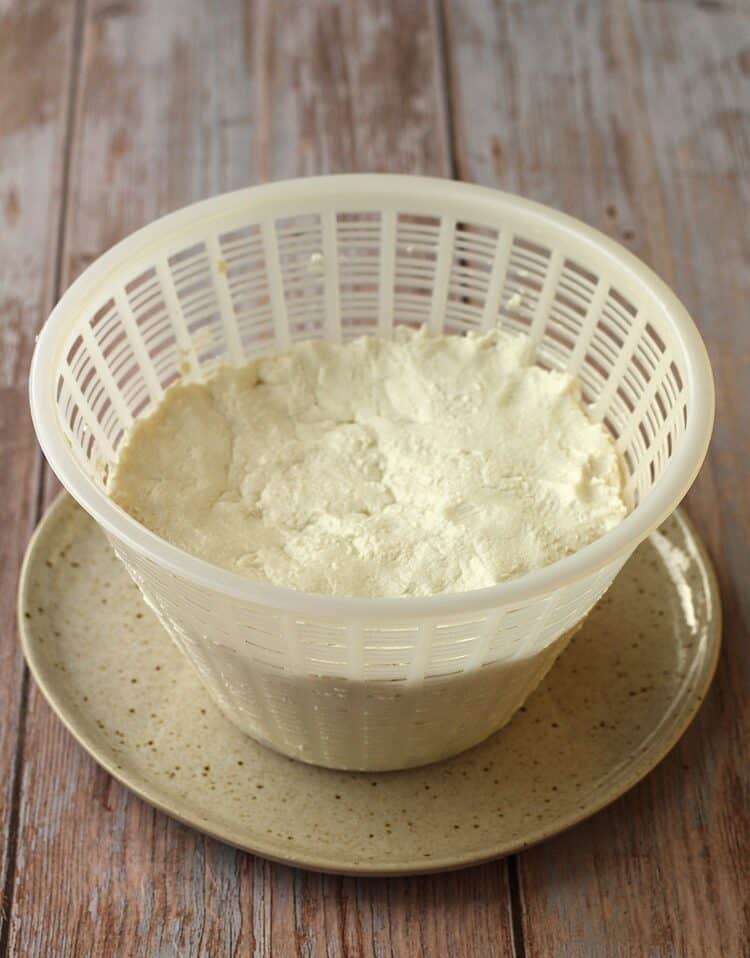
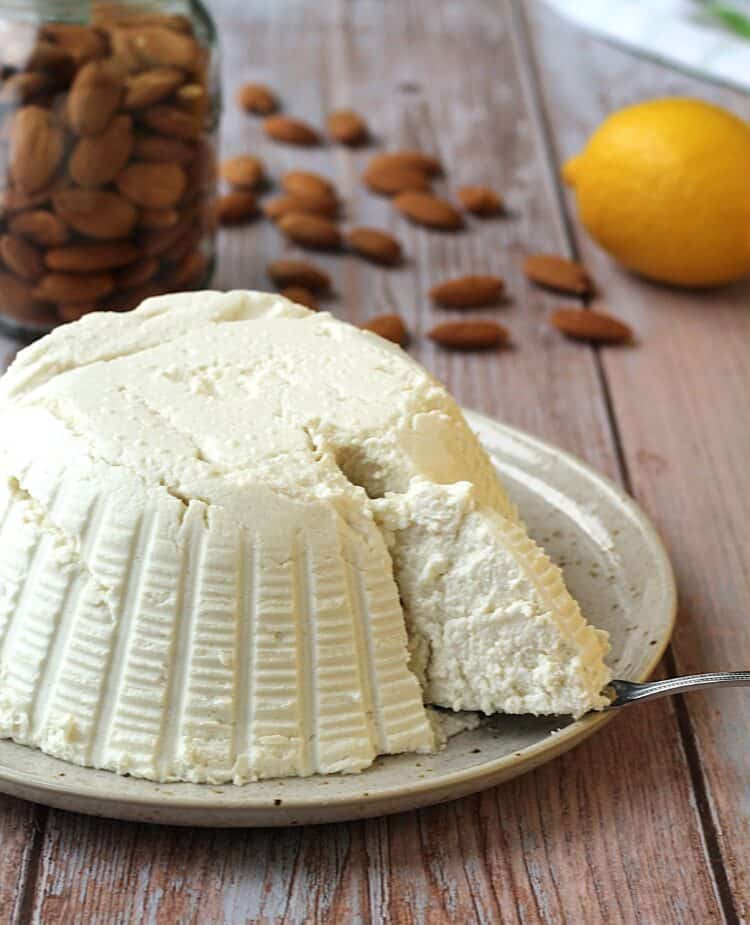
Recipe Notes
-Omit the salt if you wish to use the ricotta for making desserts.
-I strongly recommend weighing your ingredients for perfect results.
-The almond milk will curdle once the lemon juice is added. Do take note that the curds are much more fine as compared to those made with dairy milk.
-Reserve the whey to replace water when making pizza or bread. If not using immediately, whey can be frozen for up to 1 month.
Yield may vary slightly however this recipe will produce about 3 cups (690- 720 grams) of ricotta give or take a few grams.
-When the ricotta is drained, you may stir in some herbs such as parsley; thyme; oregano or others of your choice and serve with crostini.
-Use the ricotta for your favorite recipes that call for ricotta such as cannoli; stuffed pasta; gnocchi; cookies and more.
Keep refrigerated, well sealed, for up to 3-4 days.
I have not tried freezing this ricotta and I have doubts that the texture would be ideal once defrosted, therefore I can not guarantee the results.
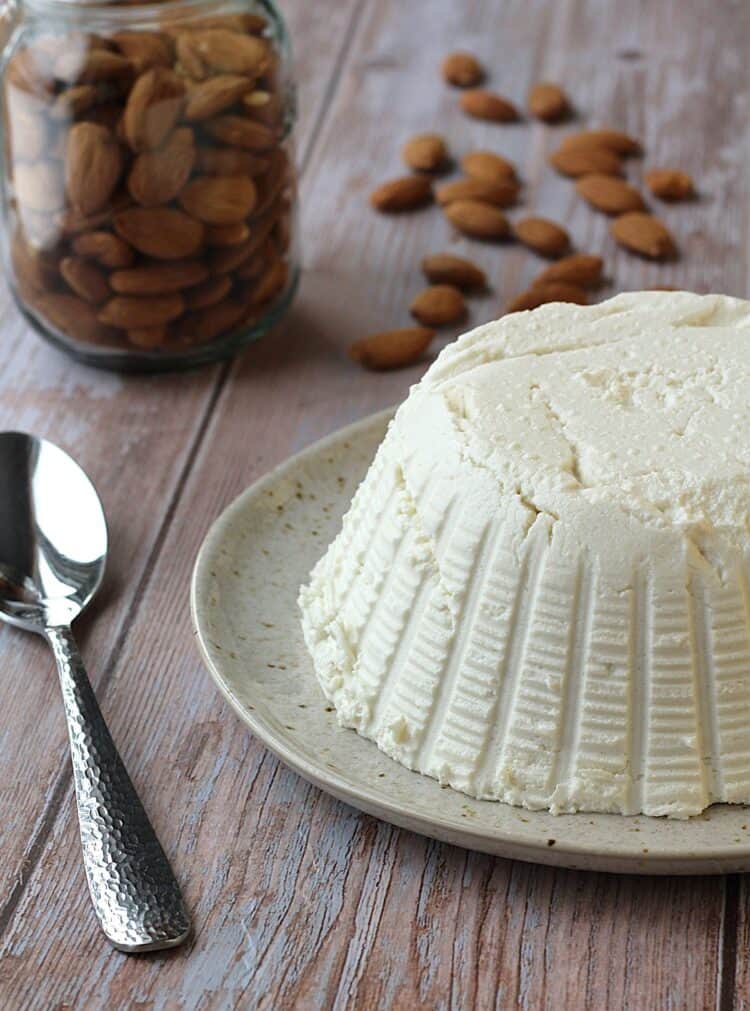
Did you try this recipe?
Let me know how much you enjoyed it by rating it in the recipe card below!
*****
A list of some of my favorite recipes made with ricotta!
- Sicilian Cannoli
- Cassatelle with Ricotta Filling
- Baked Sicilian Iris with Ricotta
- Cartocci Siciliani
- Ciambelline di Ricotta
- 3 Ingredient Ricotta Gnocchi
- Crepe Cannelloni with Spinach and Ricotta
- Spinach and Ricotta Eggplant Involtini
- Spinach and Ricotta Brioche Buns
- Easy Italian Lemon and Ricotta Doughnuts
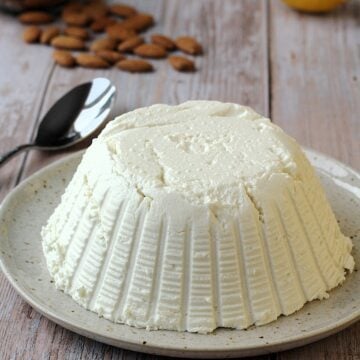
Dairy Free Ricotta Cheese Recipe
Ingredients
- 250 grams whole almonds with skins on
- 30 ml lemon juice (2 tbsp.) freshly squeezed
- 1 liter water divided
- 6 grams salt (1 tsp) optional
Instructions
Soak the almonds
- The almonds may be blanched in boiling water for 1 minute, then cooled and skins removed by slipping them between your thumb and index finger. Cover in water and soak for 6 hours or overnight. Drain well. or...
- Alternately (and easier in my opinion), cover the almonds with water and soak for a minimum of 6 hours or overnight. Then drain and remove the skin as described above.
Process the almonds
- Process the almonds, alone, in your high power blender until finely ground in your blender for 1 minute.
- Pour in 500 ml water and process for 1 minute.
- Add the remaining 500 ml of water and process one more minute. The result will be a thick, creamy almond milk.
Curdle the almond milk
- Pour the almond milk in a medium sized sauce pan and heat over medium high heat, stirring frequently, until it reaches 85 degrees C or until it is just about to come to a boil.
- Turn off the heat and stir in salt (if using) and lemon juice. Be sure to stir in the lemon juice thoroughly. Cover and let sit for 45 minutes.
- Meanwhile, line a fine meshed sieve with cheese cloth or a nut milk bag and place over a bowl.
Drain and refrigerate
- After 45 minutes, gently pour the curdled almond milk into the lined sieve and let drain at room temperature for about an hour.
- Remove the whey as it fills the bowl. Discard it or reserve it to replace water when making bread or pizza. If may also be frozen for future use.
- Place the almond ricotta in the refrigerator, cove it, and let drain for another hour or so or overnight depending on how dry you want your ricotta.
- Transfer the drained almond ricotta to a sealed container or ricotta mold (if you have one) and keep refrigerated until you are ready to use it or for up to 3-4 days.
Notes
-I strongly recommend weighing your ingredients for perfect results.
-The almond milk will curdle once the lemon juice is added. Do take note that the curds are much more fine as compared to those made with dairy milk.
-Reserve the whey to replace water when making pizza or bread. If not using immediately, whey can be frozen for up to 1 month. How much ricotta does this recipe make? Yield may vary slightly however this recipe will produce about 3 cups (690- 720 grams) of ricotta give or take a few grams. Serving Suggestions -When the ricotta is drained, you may stir in some herbs such as parsley; thyme; oregano or others of your choice and serve with crostini.
-Use the ricotta for your favorite recipes that call for ricotta such as cannoli; stuffed pasta; gnocchi; cookies; dips or spreads and more. Storage Keep refrigerated, well sealed, for up to 3-4 days. Can this ricotta be frozen? I have not tried freezing this ricotta and I have doubts that the texture would be ideal once defrosted, therefore I can not guarantee the results.


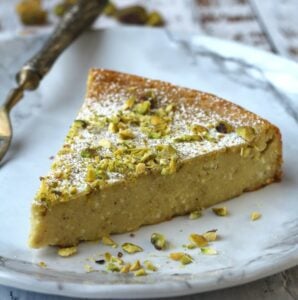



Nadia Fazio
This non dairy ricotta recipe has been a game changer for me. At last, I can now enjoy all my favorite recipes made with ricotta!